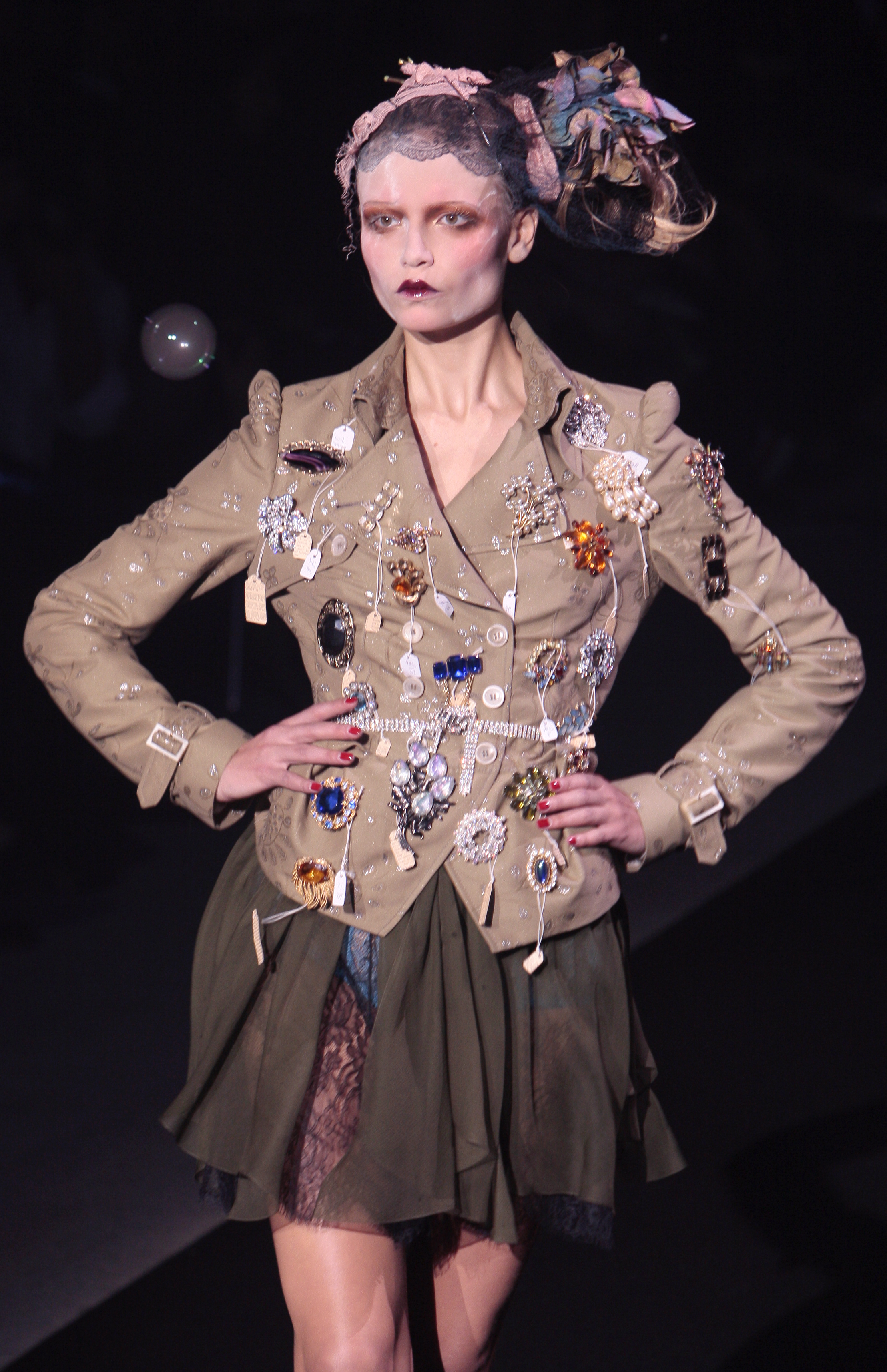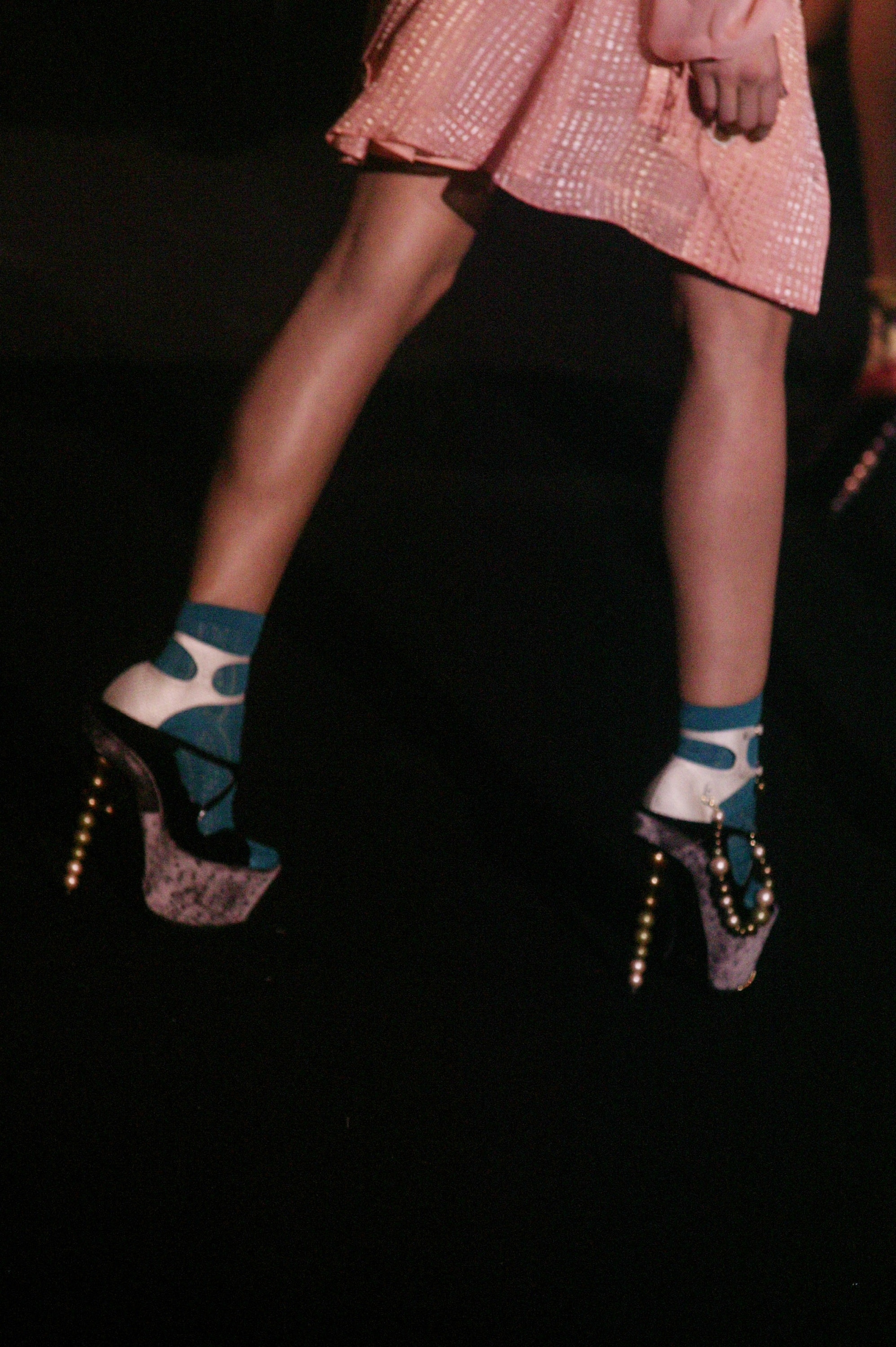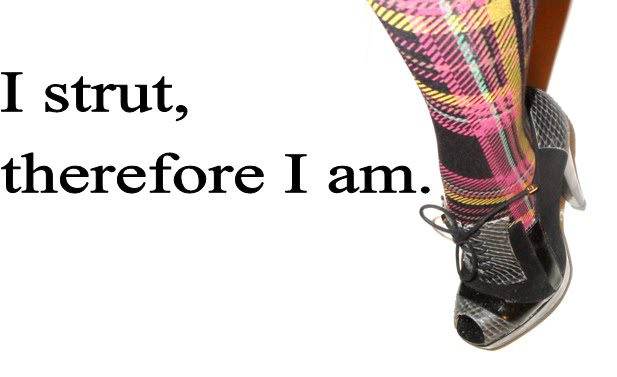Monday, 31 January 2011
Radio Vogue
Wednesday, 26 January 2011
Unfolding the Fashion Fairy Tale
In Hiroaki Ohya’s Spring/Summer 2000 collection, the gap between clothes and narrative is bridged. As he explains: ‘Fashion should be more about stories and fantasies that transport us from the daily grind’. Through conceptual craftsmanship, Ohya creates a fashion story compact enough to be kept on a bookshelf.
Entitled The Wizard of Jeanz, the collection is made up of twenty one individual books, each chapter acting as a volume from the American literary classic The Wizard of Oz. These books ‘open and unfold like paper lanterns’ in a process reminiscent of the Japanese tradition of origami.


The Wizard of Oz fairy tale has proven to be timeless, occurring ‘once upon a time’ and having the everlasting ability to relate to the present day. It is this incessant relationship that Ohya wanted to encapsulate within the transformation of books to clothing. This idea was formulated whilst at a flea market in New York, where Ohya admired an old book and appreciated the resonance of storytelling on contemporary culture. Only twenty editions of The Wizard of Jeanz were created – a side step away from the ‘Made in China’ label attached to throw away garments of the ephemeral fashion world. Not only does Ohya give his admirers something they can keep forever, but also an enchanting escape into the world of fairy tale – the 'Land of Jeanz', a place far, far away over the rainbow...
Ohya’s work is currently being showcased at ‘Future Beauty: 30 Years of Japanese Fashion’ at the Barbican Art Gallery, London (15 October 2010-6 February 2011)
Sunday, 28 November 2010
‘At the start of this year, I never thought I’d be cleaning Lindsey Lohan’s desk out…’

After attending a seminar at Whitechapel Gallery last week, I cannot help but speak about Giles Deacon on first name terms. Growing up in Yorkshire, like myself I felt comforted by his Northern accent and down-to-earth demeanour. The illustrations accompanying this article capture his playful personality and ability to have fun in an industry sometimes shrouded with superficiality. Like a breath of fresh air, he declares his love for ‘great women’ and goes on to tell us, ‘I do not like acres of faceless girls’. His catwalk models and illustrated figures define the Giles brand, almost caricature like in subversive outfits that celebrate the female body – the clothes enhancing personality rather than overshadowing it. He states that ‘character, experience and opinion’ are all important in his model castings for the shows. Unlike other designers, whose collections are named after their formal surname (for example: Chanel, Valentino, Givenchy, Dolce and Gabbanna) Giles’s own label is just Giles. See the way he signs the annotation sketch dotted with a kiss? Like the brand, a tad flirty but full of genuine affection all the same – Giles down to a tea.
Wednesday, 17 November 2010
McQueen: The Next Chapter

‘The thing that Lee was about, and McQueen is about, is telling a story’, Sarah Burton explains after the showcasing of the Alexander McQueen runway collection at Paris in October. As her first Fashion Week since being appointed creative director she had huge boots to fill, under pressure to live up to the legend, both literally and metaphorically. In perfect sync with her predecessor, Burton showed that she was not only reading off the same page as Lee but ‘could do it in her own way’.
As grass emerges through the cracks of the white washed floorboards, the models footsteps fall confidently and dress hems flow freely. Burton gives the brand a new identity; McQueen has always been about strong women and Burton follows this train of thought in the Spring/Summer collection. However, this new woman seemed somewhat softer. The clothes had lost that archetypal rawness that McQueen was renowned for and replaces it with a natural purity. In the collection, we see a movement representative of the loss and regaining of different identities. The graceful white dresses allude to innocence; the structured tailoring is somewhat freer. As skirts billow and shoulders flutter, the colour palette shifts from the darkness that McQueen embraced to neutrals representative of a fresh start. It is clear that Burton successfully blends the McQueen sensibility with a slightly altered, less tainted identity, taking our imaginations to somewhere new yet reminiscent of old.
Wednesday, 10 February 2010
Soul Purpose
Review of The September Issue: The Vogue Documentary Film
The September Issue is far from your conventional ‘chick flick’. If it is ‘It’ bags, Prada dresses and Christian Louboutin heels that you are looking for you have come to the wrong place. The September Issue is in fact a documentary; a real life, factually objective film. So one can make one’s own mind up as to what the fashion industry stands for.
For some, The September Issue will illustrate the publishing house as materialistic, pretentious, and trivial. Those same old demeaning adjectives used by people that just do not understand what fashions about. Anna Wintour opens up the documentary with a polemical protest for fashion, setting the tone for the rest of the piece: ‘Just because you like to put on a beautiful Carolina Herrera dress or a pair of J Brand blue jeans instead of something basic from Kmart - it doesn't mean that you are dumb person.’
For others, The September Issue is a chance for eager fashionistas to have a snoop at what really goes down in Vogue head office. And it seems – thank the Lord – the magazine is not run by a clique of privileged L.A. princesses, but a group of middle-aged men and women with their heads firmly screwed on. Behind the glossy glamour and the couture clothes sits a team of hardworking artists and academics that work conscientiously for a cause that they truly believe in.
So what is this cause? Well The September Issue does not exactly answer that question, nor does it seek to do so. However, the documentary does illustrate the artistic depth and conceptual meaning behind fashion design. It is cleverly constructed to get its audience to reassess the importance of fashion in society, and the integral role it plays within identity construction.
The magazine is marked for its standard of excellence both editorially and visually. Vogue has published some of the most significant, influential and imaginative photographic shoots in contemporary art including writings on the arts, culture and politics. Thus, the issues Vogue are from inconsequential. Alan Behr and Julie Hackett Behr state: ‘can it really be just about vanity, or is something else, something deeper and more resonant, at work?’ The way in which we portray ourselves every morning is intrinsically linked to identity, self-representation and character definition. Clothes are the art that we wear every single day. For Grace Coddington (Vogue’s Creative Director) fashion is not just about clothes but about the fantasy that they inspire within us.
If there is one thing that The September Issue seeks to portray, it is the essence of beauty attached to the fashion industry. At the heart of Vogue is a relationship with fashion and clothes intrinsically linked to the soul. Thus, next time you pick up an issue take the time to understand the Vogue philosophy.
Tuesday, 3 November 2009
Glamorous Expectations

 Vogue writer, Jessica Bumpus commented on John Galliano’s Spring/Summer 2010 collection at Paris Fashion Week, stating that ‘there was something
Vogue writer, Jessica Bumpus commented on John Galliano’s Spring/Summer 2010 collection at Paris Fashion Week, stating that ‘there was something There certainly was a spooky charm about this show – as Galliano toyed with the old versus the new in an enchanting assortment of clothes, there was an essence of time stood still. Galliano states that: ‘It was inspired by a trip to LA visiting fabulous houses and imaging who'd live there’.
When Pip first meets Miss Havisham at Satis House, in Charles Dicken’s Great Expectations he notes: ‘But I saw that everything within my view that ought to be white, had been white long ago, and had lost its lustre, and was faded and yellow. I saw that the bride within the bridal dress had withered like the dress, and like the flowers, and had no brightness left but the brightness of her sunken eyes.’
Galliano’s models incorporate the childhood beauty of Estella whilst also conjuring up the disintegrating waxwork appearance of Miss Havisham. This clever intermingling of the Dicken’s characterisation is illustrated through motifs and symbols that are reminiscent of the uncanny relationship between Miss Havisham and Estella. The pathological effects of Miss Havisham’s heartbreak control the events of the tale, in the same way that they structure the clothing in Galliano’s collection.
The collection displays laced embroidered dresses worn with strings of pearls, elegant little gloves and antique jewellery that still has its price tags attached. The smoke billows from the stage shadowing the rainbow coloured bubbles that playfully bounce off the runway. The set of contrasts that Galliano draws suggest light-hearted fun that once dusted off reveals something far more sinister – his glamorous models look like perfectly painted dolls whilst their smudged eyes suggest more sorrowful undertones.
There is an eerie nuance to the whole collection, a mustiness to the clothes and a darkness to the diamonds. The fragile, floaty dresses are contrasted with intricate black lace, and the little girl socks worn with big girl shoes suggest a rupture in time – aspects of a childhood sweetheart show through the mournful composure of the ominous and the old. Bunches of decaying roses sit gracefully in the models hair, some carry pocket watches; others, bags of make up wrapped up in transparent newspaper print.
This evokes a bygone era – a point in time, a sequence of events, a tragedy that is still being clutched onto. The models look sombre, yet there is still a playful demeanour in their poise, a sense of the supernatural in their ambience. It is as if time has become detached from reality – and Galliano is illustrating to us the broken pieces of a ruptured existence. This collection demonstrates the innocence of childhood in distinction to the melancholy experienced through growing up, and therefore extends upon the metaphor of Miss Havisham and brings it bang up to date – into the homes of the rich and famous in LA.
Thursday, 15 October 2009
Memoirs of an Eco-Icon.

Environmentally friendly. Pah. Who cares?
But, as per, Westwood shows us how to go ‘green’ in style.
Entitled Planet Gaia Westwood’s Spring/Summer 2010 show hit the nail on the head at Paris Fashion Week at the beginning of this month. This collection, like all Westwood’s work had a political point to it. Using her clothing – and essentially her art as a vehicle for change she calls out for our public to interact. This co-operation takes the form of the ‘DIY – Do It Yourself’ concept.
The dire state of our planet is an issue at the forefront of ethical and political debate. An issue that is being fundamentally ignored. However, Westwood’s manifesto is not expensive or unattractive like many eco-friendly designs currently on the market. Westwood implores with her audience to join the fight to save the environment by pinning your own graphics to your t-shirts; ‘a collage, a picture of your boyfriend, a newspaper cutting’.
The collection models sported environmental slogans ripped out of magazines and attached to the outfits in plastic wallets. The fabrics raw and sculptured, the models delicately beautiful; organic chunky knits were worn in contrast with pure shredded silks - the clash of natural textures gives the outfits a haphazard but elegant sense of the natural world. Consequently, the collection encapsulates the paradoxes of the environment to a tee.
There is certainly an oriental ambiance about this show. Hair backcombed and fiery, set against the delicate white faces of the models gives a Geisha appearance. Yet, the theme incorporates darker undertones as one model carries a shiny green apple in her hand – a clear representation of Eve, the fallen woman. Therefore, a distinction is drawn between the disobedient Eve and the dutiful Geisha.
This metaphor maps onto the issue of global warming: some choose to pick the apple from the tree of knowledge and create the fall of mankind – thus, they carry on using their electrical appliances and material products with no care for the subsequent fall of the environment – into a possible underworld state. Others however, involve themselves and play an active role. They have a part to serve in the conditioning of the planet, helping it keep its beautiful appearance akin to the stunningly unspoilt Geisha girls.
